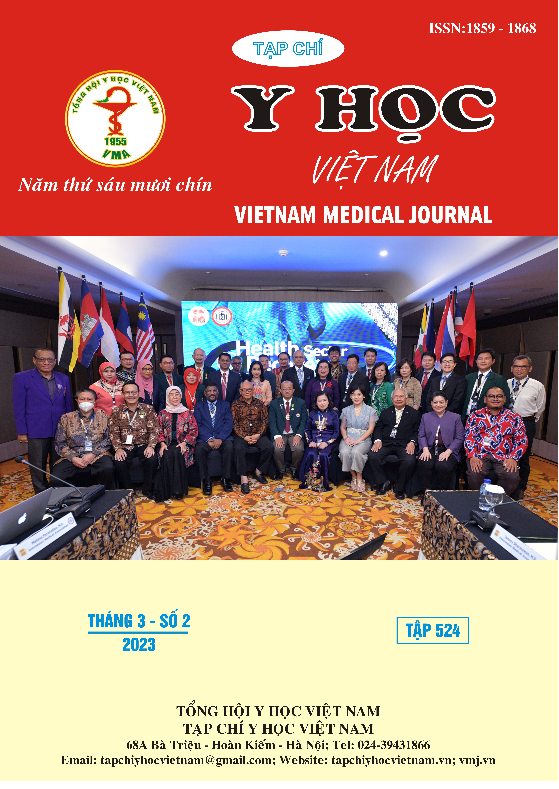THE PREVALENCE AND RISK FACTORS RELATED TO SYMPTOM PERSISTENCE AFTER COVID-19 IN VIETNAMESE CHILDREN AT CHILDREN’S HOSPITAL 1
Main Article Content
Abstract
Introduction: The data on prolonged symptoms after COVID-19 and their impact on children is still limited. This study aims to describe the prevalence, and characteristics of persistent symptoms after COVID-19 and find out risk factors related to symptom persistence after COVID-19 in Vietnamese children. Methods: A descriptive prospective follow-up study was conducted from August to November 2021. We interviewed the patient’s caregivers at the time of one and two months after their discharge about the children’s health status and if there were still any symptoms related to COVID-19. The symptoms asked were based on WHO’s Global Clinical Data Platform 1 of COVID-19. Results: One hundred ninety-six hospitalized children with positive SARS-CoV-2 results, with a median age of 16.4 months, were included. Acute phase severity was recorded from mild to critical. At the time of discharge, 34.2% (67 children) still had at least 1 symptom. After 1 month and 2 months, this rate dropped to 15.8% and 9.7%, respectively. After 2 months, there were 19/196 cases with persistent symptoms, in which respiratory symptoms still accounted for the highest rate: cough (42.1%), wheezing (31.6%), and shortness of breath (10.5%). No factors were found to be related to the prolongation of symptoms after SARS-CoV-2 infection in children. Conclusions: The prevalence of persistent symptoms in COVID-19 children 2 months after discharge in the study was relatively low, and most of the symptoms were mild. Further studies are needed to fully understand the impact of long COVID in children, especially young children.
Article Details
Keywords
long COVID, persistent symptoms, COVID-19, pediatrics
References
2. Buonsenso D, Munblit D, De Rose C, Sinatti D, Ricchiuto A, Carfi A, et al. Preliminary evidence on long COVID in children. Acta paediatrica (Oslo, Norway: 1992). 2021;110(7):2208-11.
3. Iqbal FM, Lam K, Sounderajah V, Clarke JM, Ashrafian H, Darzi A. Characteristics and predictors of acute and chronic post-COVID syndrome: A systematic review and meta-analysis. EClinicalMedicine. 2021; 36: 100899.
4. Lopez-Leon S, Wegman-Ostrosky T, Perelman C, Sepulveda R, Rebolledo PA, Cuapio A, et al. More than 50 long-term effects of COVID-19: a systematic review and meta-analysis. Sci Rep. 2021;11(1):16144.
5. Ludvigsson JF. Case report and systematic review suggest that children may experience similar long-term effects to adults after clinical COVID-19. Acta paediatrica (Oslo, Norway: 1992). 2021;110(3):914-21.
6. Thomson H. Children with long covid. New Sci. 2021;249(3323):10-1.
7. World Health Organization. The WHO Global Clinical Platform for COVID-19 2021. Available from: https://www.who.int/teams/health-care-readiness-clinical-unit/covid-19/data-platform
8. Zimmermann P, Pittet LF, Curtis N. How Common is Long COVID in Children and Adolescents? The Pediatric infectious disease journal. 2021;40(12): e482-e7.


